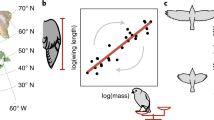Abstract
Multiannual variation is one of several types of species morphological variability, one that is directly related to ecophenotypic and evolutionary responses to changing environments. The morphology of small mammal populations can change quickly because generation length is short, usually one year, and individual lifespans are often only a year or two. We studied the response of skull and mandible morphology in the common shrew Sorex araneus Linnaeus, 1758 to nine climate factors related to snow cover, temperature and precipitation at a study site near Syktyvkar, Russia through the period 1976 to 2003. We found that these multivariate phenotypes changed significantly from year to year, though there were no clear directional trends in the change. The phenotype itself was closely associated with the range of annual temperature and winter precipitation. Changes in summer temperatures and precipitation seem to drive change in size-related phenotypes, whereas changes in snow cover and winter temperature seem to drive change in shape.
Similar content being viewed by others
References
Andersen T. and Wiig O. 1982. Epigenetic variation in fluctuating population of lemming (Lemmus lemmus) in Norway. Journal of Zoology 197: 391–404.
Berry R. J. and Jakobson M. E. 1975. Ecological genetics of an island population of the house mouse (Mus musculus). Journal of Zoology 175: 523–540.
Bolshakov V. N., Vasilev A. G. and Sharova L. P. 1996. [The fauna and population ecology of shrews (Mammalia, Soricidae) in the Urals]. Yekaterinburg: 1–268. [In Russian]
Dehnel A. 1949. Studies on the genus Sorex L. Annales Universitatis Mariae Curie-Skłodowska 4: 18–102.
Dryden I. L. and Mardia K. V. 1998. Statistical Analysis of Shape. John Wiley, New York.
Hutchinson G. E. 1957. Concluding Remarks. Cold Spring Harbor Symposiums on Quantitative Biology 22: 415–427.
Koontz T. L., Shepherd U. L. and Marshall D. 2001. The effect of climate change on Merriam’s kangaroo rat, Dipodomys merriami. Journal of Arid Environments 49: 581–591. doi: 10.1006/jare.2001.0806
Kryštufek B. and Quadracci A. 2008. Effects of latitude and allopatry on body size variation in European water shrews. Acta Theriologica 53: 39–46.
Manly B. F. J. 1991. Randomization, bootstrap and Monte Carlo methods in biology. Chapman and Hall, New York.
McKinney M. L. and Oyen C. W. 1989. Causation and non-randomness in biological and geological time series: temperature as a proximal control of extinction and diversity. Palaios 4: 3–15.
Polly P. D. 2007. Phylogeographic differentiation in Sorex araneus: morphology in relation to geography and kariotype. Russian Journal of Theriology 6: 73–84.
Poroshin E. A., Wójcik J. M., Bobretsov A. V. and Kupriyanova I. F. 2006. Morphometric differentiation between the Manturovo and Serov chromosome races of the common shrew Sorex araneus. Acta Theriologica 51: 255–264.
Rohlf F. J. 1993. Relative warp analysis and an example of its application to mosquito wings. [In: Contributions to morphometrics. L. F. Marcus, E. Bello and A. Garcia-Valdecasas, eds]. Museo Nacional de Ciencias Naturales, Madrid: 131–159.
Rohlf F. J. 2003. TpsRelw, relative warps analysis, version 1.36. Department of Ecology and Evolution, State University of New York at Stony Brook, New York.
Rohlf F. J. and Slice D. 1990. Extensions of the Procrustes method for the optimal superimposition of landmarks. Systematic Zoology 39: 40–49. doi: 10.2307/2992207
Rychlik L., Ramalhinho G. and Polly P. D. 2006. Response to environmental factors and competition: skull, mandible and tooth shape in Polish Water shrews (Neomys, Soricidae, Mammalia). Journal of Zoological Systematics and Evolutionary Research 44: 339–351. doi: 10.1111/ j.1439-0469.2006.00374.x
StatSoft, Inc. 2001. STATISTICA (data analysis software system), version 6.0. www. statsoft.com.
Vasilev A. G., Vasileva I. A. and Bolshakov V. N. 2000. Evolutionary-ecological analysis of species population structure sustainability (chronogeographical approach). Yekaterinburg: 1–132. [In Russian]
Wójcik A. M., Polly P. D., Sikorski M. D. and Wójcik J. M. 2006. Population cycling and size, shape, epigenetic variation, and protein polymorphism in the yellownecked mouse,Apodemus flavicollis. Evolution 60: 1925–1935.
Wójcik J. M., Bogdanowicz W., Pucek Z., Wójcik A. M. and Zalewska H. 2000. Morphometric variation of the common shrew Sorex araneus in Poland, in relation to karyotype. Acta Theriologica 45, Suppl. 1: 161–172.
Wolf M., Friggens M. and Salazar-Bravo J. 2009. Does weather shape rodents? Climate related changes in morphology of two heteromyid species. Naturwissenschaften 96: 93–101. doi: 10.1007/s00114-008-0456-y 202 E. A. Poroshin et al.
Author information
Authors and Affiliations
Corresponding author
Additional information
Associate editor was Krzysztof Schmidt.
Rights and permissions
About this article
Cite this article
Poroshin, E.A., Polly, P.D. & Wójcik, J.M. Climate and morphological change on decadal scales: Multiannual variation in the common shrew Sorex araneus in northeast Russia. Acta Theriol 55, 193–202 (2010). https://doi.org/10.4098/j.at.0001-7051.106.2009
Received:
Accepted:
Issue Date:
DOI: https://doi.org/10.4098/j.at.0001-7051.106.2009




